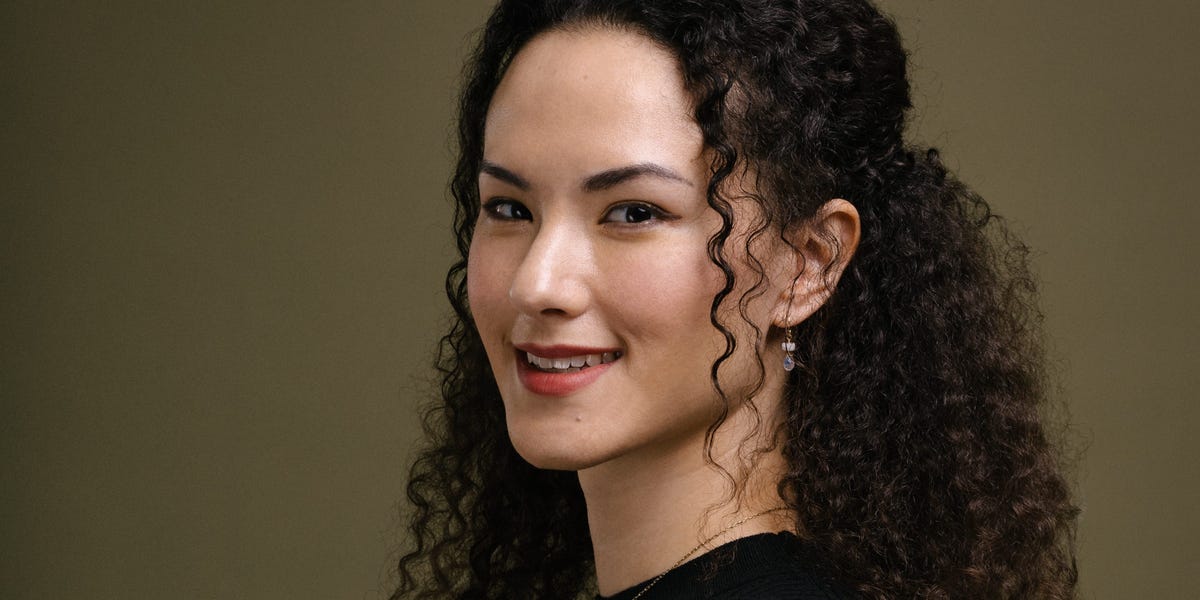- Bluesky, one of the newer alternatives to X, has been an invite-only platform until Tuesday.
- Jay Graber, the CEO of Bluesky, says the platform has 3 million users.
- Graber is “optimistic about human potential, even though I’m realistic about human nature.”
When Bluesky launched last year, it filled a gap that people looking for alternatives to X desperately needed, as it seemed the ship formerly known as Twitter was possibly sinking. Against all odds, it hasn’t sunk yet.
Bluesky wasn’t as confusing as Mastodon and wasn’t owned by Meta, like Threads. Bluesky looks and feels much like Old Twitter.
There was only one snag: It was available as a beta launch, only with invite codes, which were initially so hard to obtain that even Joe Biden couldn’t get one. Starting Tuesday, Bluesky will finally be out of “beta” and open to anyone — no codes needed.
Similar to Mastodon and Threads, Bluesky is an experiment in a new, “decentralized” way of running a social app, where users can create their own communities and moderation rules. Bluesky also has its own moderation team.
Jack Dorsey was involved in creating Bluesky while still at Twitter and now sits on its board. It’s organized as a public-benefit corporation.
Ultimately, it may not be a winner-takes-all competition between these X alternatives; the new approach to social media may be to exist happily in smaller pockets without needing massive scale to survive. Though Meta certainly would love to win the battle with Threads.
But has the Bluesky buzz left the barn?
Business Insider spoke with Jay Graber, the CEO of Bluesky, about the app, which she said now has 3 million users. It’s opening up to everyone and coming later this month, will have new features that link it to the “fediverse.”
This interview has been edited for length and clarity.
Why did it take so long to open up to everyone?
We’ve been building something that looks like Twitter; alternative rails for people to build all sorts of different services on top of it. One example they have right now is the custom feed. But all the other parts of the app can be run by third parties. It did take a while to set this up to make sure that you can get this right and provide a good user experience.
Over the past year, we’ve been giving ourselves space to make sure that things like the underlying infrastructure and moderation capacities are built up. Now, we’re just about ready.
Later this month, we’re opening up Federation and opening up third-party labeling, allowing people to run moderation services. So those are some of the things that took some more time.
[Editor’s note: Federation here means that people can leave and take their followers to other apps, unlike traditional social media where it’s a walled garden.]
Is there a concern that, having taken so long, Bluesky may have lost momentum in terms of new users wanting to sign up?
What we’re really building out is something that provides more resilient, long-term infrastructure. I think one of the things that’s happened with Twitter in the past year that caused some of the initial influx is a good example of why what we’re building needs to exist — we’re trying to make it so one central point of failure [like what happened at X] can’t happen again.
Tell me a little bit about the third-party moderation and feeds — what will that look like?
You’re just gonna go in, and at first, you have to do “All Feeds” that we give you: We give you “Following” (the chronological feed) and “Discover,” which is an algorithmic feed. If you’ve never modified anything else, that’s like a normal social-app experience. But if you want to try out custom feeds that third parties have built, you go into your feed selector, and then you can search for feeds that specialize in niches like “Moss Feeds” or another general-purpose algorithm like the “For You.” And then it’s layered your experience.
When you have a lot of new users coming on who might be less technically literate, and there’s a bunch of these customizable feeds and elements — how do you make it not confusing to use Bluesky for a normie?
A big part of our design philosophy has been to give users sensible default settings but allow them choice and the right to leave. Then, if they want to go a level deeper and explore more of the custom options, they can dive in if they want and choose and customize.
Correction: February 7, 2024 — An earlier version of this story misstated the name of a particular niche feed: It is a “Moss Feed,” not a “Boss Feed.” Bluesky CEO Jay Graber also said what happened at Twitter last year was a “good example of why what we’re building needs to exist,” not “overbuilding.”
Read the full article here





